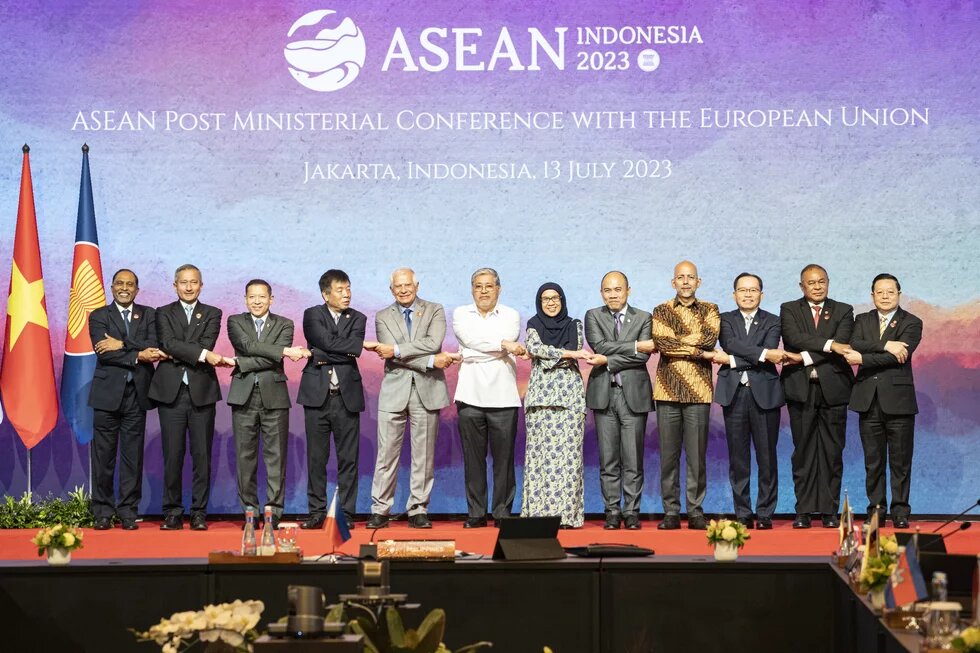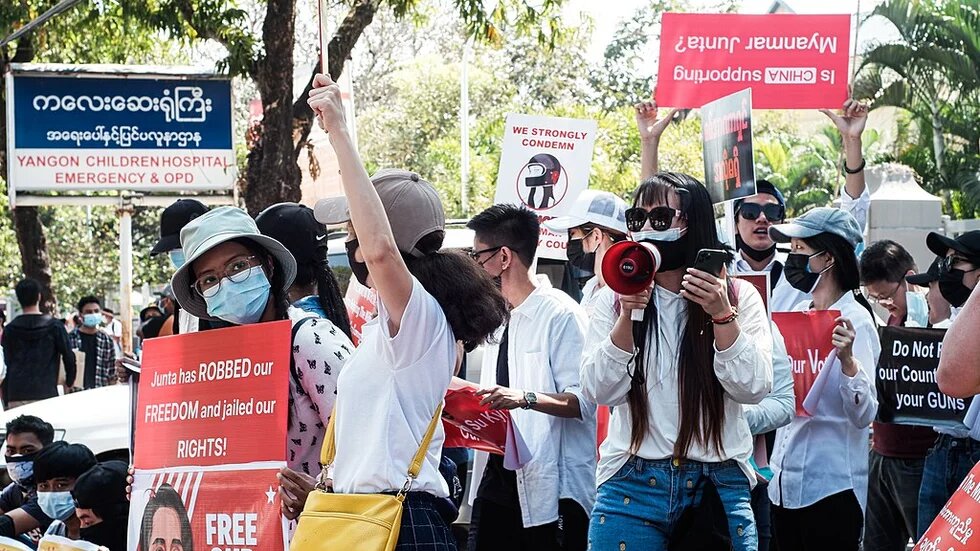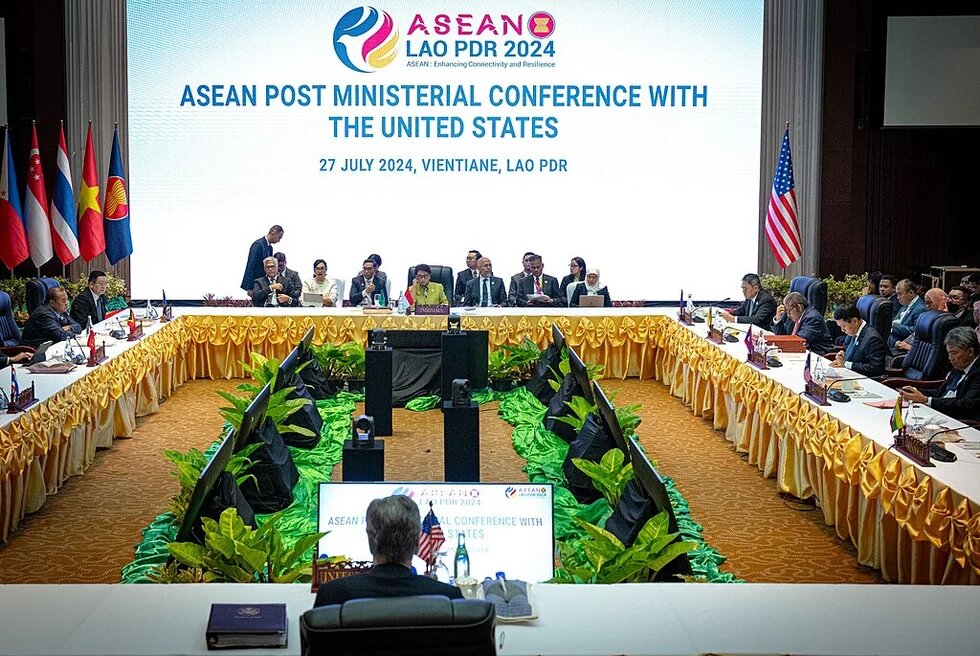
With the changing geopolitical landscape, the Indo-Pacific Region is already beset with ongoing territorial disputes, security concerns, and democratic challenges. Southeast Asia, or ASEAN, is positioned at the heart of the Indo-Pacific.
Despite these challenges and the diversity in governance, peoples, and cultures across Southeast Asian nations, there is potential for advocating a human-centred approach, prioritising the voices of those most affected by the regional conflicts, such as Myanmar and the Philippines, by involving the non-state actors, such as the civil society organisations (CSOs), grassroots movements, and community leaders since they are the ones directly affected by the on-going conflicts in the region.
This article focuses on the role of state leadership and the non-state actors in forging a balanced and inclusive regional order as well as a more equitable and resilient Indo-Pacific region.

The shores of Southeast Asia, where ancient traditions blend with modern aspirations, embody a region caught in the struggle for power and influence. This struggle mirrors the broader Indo-Pacific tensions, where various states vie for leadership. Southeast Asia occupies a critical position within this landscape, balancing competing interests and ideologies. But what does it mean for Southeast Asia to be central in this region? Is the region merely a battleground for greater powers, or does it have the potential to shape its own destiny within the Indo-Pacific? The region’s ability to shape its destiny in the Indo-Pacific hinges on more than just state actors; it requires diverse voices contributing to its complexity. The question is whether Southeast Asia will assert its agency and influence regional dynamics, or will it be constrained by external forces?
Diversity to Unity?
The Indo-Pacific is not a monolithic entity; it is a vast region comprising diverse sub-regions with distinct characteristics, cultures, and strategic interests. This complexity is reflected in its geopolitical landscape, where the strategic competition between the United States and China looms large. The U.S. has adopted an Indo-Pacific strategy that emphasises alliances, partnerships, and democratic values, while also aiming to counter China’s growing global influence. The notion of Indo-Pacific countries as “like-minded” entities with a shared vision is complex. While these states have a broad consensus on maintaining a free, open, and inclusive Indo-Pacific region— primarily driven by concerns over China’s global assertiveness - significant divergences exist in their strategic priorities and approaches. This divergence raises a critical question: Can a unified Indo-Pacific vision be realised when national interests often pull in different directions?
Amid escalating tensions between the U.S. and China, many middle and smaller powers have sought to avoid being drawn into a binary choice between the two. Instead, they have pursued a hedging strategy, balancing their relationships with both powers while striving to maintain their autonomy and safeguard their national interests. For instance, the European Union (EU) and the United Kingdom (UK) have shifted their focus to the Indo-Pacific, recognising the need to engage with the region and counterbalance China’s influence. Meanwhile, countries like India and Japan prioritise balancing China’s influence while enhancing their regional standing. Conversely, Southeast Asian nations, such as Indonesia and Vietnam, emphasise ASEAN centrality and strive to avoid being drawn into major power rivalries. Furthermore, the differing levels of economic development, political systems, and historical relationships with global powers contribute to varied national interests. Consequently, while Indo-Pacific countries may be united in principles, their visions are often shaped by distinct and occasionally conflicting national agendas.
Southeast Asia, as a central in the Indo-Pacific, significantly influences regional dynamics. With its diverse forms of governance, from democratic to authoritarian, it reflects the broader complexities of the Indo-Pacific. This diversity presents opportunities for dialogue with various stakeholders, from state actors to non-state entities, complicating the navigation of regional challenges and opportunities. ASEAN’s centrality in the Indo-Pacific is a recurring theme in regional discourse, but internal divisions and external pressures have challenged its ability to maintain its central role. The ASEAN Outlook on the Indo-Pacific (AOIP), adopted in 2019, aims to reinforce ASEAN’s role through principles such as inclusivity and respect for international law, while promoting cooperation in maritime security, economic integration, and sustainable development. Indonesia’s chairmanship in 2023 has also sought to advance the implementation of the AOIP, including the ASEAN Indo-Pacific Forum (AIPD), positioning the AOIP as a pivotal platform for reinforcing ASEAN’s central role. Yet questions remain: Can ASEAN maintain its centrality in a region increasingly influenced by the strategic interests of major powers or is it at risk of becoming a passive observer in its backyard?
Human Rights, Security and Democracy: Central Themes in Regional Dialogue
Human rights, security and democracy have increasingly become central themes in regional dialogue, reflecting their growing importance to the Indo-Pacific’s stability. However, promoting these values has been fraught with challenges. As the primary regional organisation, ASEAN has been at the forefront to maintain the region’s peace, security, and stability. However, ASEAN’s consensus-based approach has often been criticised for its inability to effectively address pressing issues, such as the South China Sea disputes and the humanitarian crisis in Myanmar.
The South China Sea dispute is a microcosm of the broader Indo-Pacific security concerns. Despite ASEAN’s efforts to mediate and facilitate dialogue, the lack of a binding Code of Conduct has limited its effectiveness. For instance, ASEAN foreign ministers expressed concern over the ongoing tensions in the South China Sea following confrontations between Chinese and Philippine vessels. They warned that the growing friction could threaten regional peace, urging all parties to engage in peaceful dialogue. The ministers reaffirmed their “unity and solidarity” and commitment to “maintaining and further strengthening stability in our maritime sphere to bring about overall peace, security, stability, and prosperity in our region.” In this context, stronger regional exchange and dialogue becomes imperative.
While attempting to balance the principles of sovereignty and human rights, ASEAN’s response, including the Five-Point Consensus (5PC), has been criticised for its lack of decisive action. Myanmar’s situation serves as a stark reminder of the region’s challenges. The military coup in February 2021 has led to ongoing violence and human rights abuses, posing a significant threat to regional stability. In January 2014, Southeast Asian foreign ministers brought Myanmar back to meetings despite an agreement that barred top-level generals from participating and has called for a “Myanmar-owned and led solution” to the crisis. The situation in Myanmar highlights the limitations of both ASEAN and the broader Indo-Pacific approach on democracy and human rights. It signals that ASEAN needs to evolve and adapt its mechanisms to address these issues more effectively.
Regional Exchange as a Catalyst for Change?
Regional exchange and dialogue are often touted as keys to addressing the challenges of the Indo-Pacific. These mechanisms allow for the sharing of best practices, the building of trust, and the fostering of mutual understanding among countries with diverse political systems and cultural backgrounds. Such exchanges can promote a deeper understanding of the common threats and opportunities facing the region while also building the trust and cooperation necessary to address them collectively. In the evolving geopolitical landscape of the Indo-Pacific, the behaviour of state actors has undergone significant changes. States have become custodians of the Indo-Pacific framework, responsible for maintaining the region’s stability and upholding its values and visions. However, any attempt at systematic change in this region will have repercussions at the systemic level, necessitating careful consideration of how these changes are implemented and how diverse views are incorporated into the process.
Non-state actors, such as civil society organisations (CSOs) and think tanks, have become vital in shaping Indo-Pacific discourse by promoting inclusivity, transparency, and cooperation. Emphasising Track-1.5 and Track-2 diplomacy is essential in this context. They offer a platform for stakeholders to engage in dialogue and collaboration, providing alternative perspectives that complement official state policies. These exchanges can be particularly valuable in addressing sensitive issues such as human rights, where political considerations might constrain official dialogues. The feasibility of regional dialogue and exchange will depend on ASEAN’s ability to adapt to the changing dynamics. This may require ASEAN to expand its multilateral approach, engage more deeply with external partners, and be willing to ‘bend the rules’ when necessary. For instance, the Taiwan issue presents a potential challenge with far-reaching implications for ASEAN’s relationships with China and the U.S. How ASEAN navigates this issue will be a true test of its centrality and relevance in the Indo-Pacific.
Beyond Geopolitics: Elevating People’s Voices and Upholding Principles in the Indo-Pacific
The Indo-Pacific region is at a crossroads, with Southeast Asia at its centre. The region faces significant challenges, including territorial disputes, security threats, and democratic erosion. However, these challenges present opportunities for Southeast Asia to lead in shaping a more just and equitable Indo-Pacific order. By adopting a human-centred approach and prioritising the voices of those most affected, Southeast Asia can help create a region that is not only strategically balanced but also inclusive and resilient. While this may seem idealistic, it is important to remember that the future of this region lies not only in the hands of governments and policymakers but also in the collective efforts of its people. Pursuing security and stability should not come at the expense of human rights and democracy. Regional dialogue must include the perspectives of CSOs, grassroots movements, and community leaders to ensure that Southeast Asia's contributions are both strategically sound and grounded in the realities of its people. At the same time, the Indo-Pacific framework should remain true to its aspirations and principles, rather than expanding with divergent intentions.
_
Dr. Khoo Ying Hooi is an Associate Professor in the Department of International and Strategic Studies at Universiti Malaya (UM), where she also leads the UM Research Group on Human Rights. Her research focuses on the intersectionality of power, human rights, democratisation, and civil society in Southeast Asia, specifically Malaysia and Timor-Leste. She is the Editor-in-Chief of the Malaysian Journal of International Relations (MJIR), and is on the Editorial Board of the Journal of Current Southeast Asian Affairs, Journal of Southeast Asian Human Rights and Indonesian Law Review (ILREV). She has been active in the field of human rights and democracy in Southeast Asia for over a decade.
Disclaimer: This published work was prepared with the support of the Heinrich Böll Stiftung. The views and analysis contained in the work are those of the author and do not necessarily represent the views of the foundation. The author is responsible for any liability claims against copyright breaches of graphics, photograph, images, audio, and text used.
References:
ASEAN Indonesia 2023 Press Release. 6 September 2023. ASEAN Indo-Pacific Forum transforms rivalry into cooperation. https://www.asean2023.id/en/news/asean-indo-pacific-forum-transforms-rivalry-into-cooperation
ASEAN Statement. 30 December 2023. ASEAN Foreign Ministers’ statement on maintaining and promoting stability in the maritime sphere in Southeast Asia. https://asean.org/wp-content/uploads/2023/12/Final-Draft-ASEAN-FMs-Statement-on-Maintaining-and-Promoting-Stability-in-the-Maritime-Sphere-in-SEA.pdf
ASEAN urges ‘Myanmar-owned and led solution’ to crisis triggered by coup, 30 January 2024, Al Jazeera. https://www.aljazeera.com/news/2024/1/30/asean-urges-myanmar-owned-and-led-solution-to-crisis-triggered-by-coup
ASEAN Parliamentarians for Human Rights (APHR) Statement. 19 March 2024. ASEAN’s continued engagement with Myanmar junta risks legitimising illegal regime, Southeast Asian MPs say. https://aseanmp.org/publications/post/aseans-continued-engagement-with-myanmar-junta-risks-legitimizing-illegal-regime-southeast-asian-mps-say/


